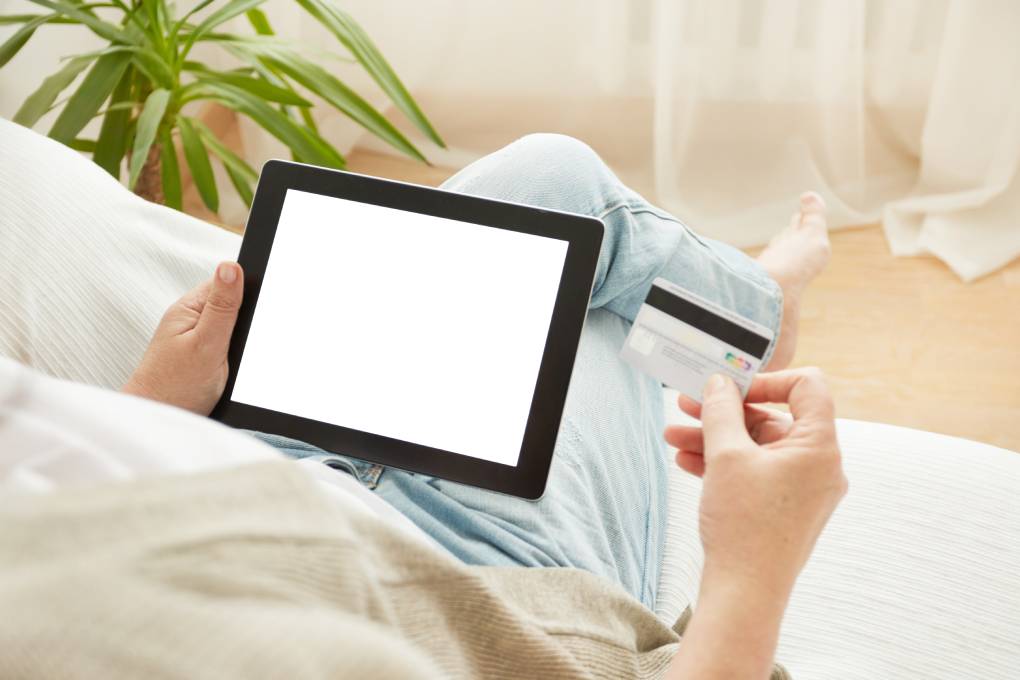Couch Commerce: Tips For Shop Optimization

Twenty-year-old Stefanie comes home in the evening after work, takes off her high heels, plugs her cell phone into the landing station, and lets herself fall on the couch. Five minutes later, a glass of wine is on the living room table, and a cooking show is cuddling on TV. Stefanie’s attention wanders.
She remembers the new handbag that she wanted to give herself for Christmas. Two years ago, she would have had to get up, turn off the TV and sit down at the desktop computer in the other room – a lot of work after a long day. Today she picks up her tablet or iPad, lying on the living room table from the day before. This phenomenon is called couch commerce. Stefanie’s chances to buy the handbag in an online shop that is specially optimized for couch commerce are very high.
How does shop optimization work for couch commerce? The essential requirement is that the online shop can be called up with the help of a tablet computer and then works technically flawlessly – be it with the use of responsive web design, a particular tablet version of the website, or even one (usually not profitable for small and medium-sized companies) App.
On the other hand, you can also optimize the online shop specifically for the usage situation – i.e., for the usual evening use on the couch at home by relaxed users who are happy to be persuaded to buy. This is an average of 20% of potential shop visitors depending on the industry.
Forwarding To The Correct Terminal Version
Stefanie will probably only shop in your online shop if she can find herself on the tablet version of the shop when calling up the URL. Because it is questionable whether she would look for the little link “switch to the mobile version” of her own accord, which she is unsure whether it even exists. The best solution is automatic forwarding. When a user “enters” your online shop, the shop reads the device used and forwards them directly to the corresponding version. Stefanie will then go straight to the tablet shop, optimized for the couch commerce experience.
Optimize Navigation And Design For Touch
In the majority of all cases, standard online shop systems are optimized for use on the desktop, which usually does not use a touch screen but instead uses a mouse and keyboard to navigate. It is, therefore, not enough for the shop to be displayed in a technically clean manner in the tablet browser.
All buttons and links must be large enough to be operated with the finger. Learn navigation and shop versions with a reduced design also reduce the necessary clicks. Gesture control such as swiping or zooming must be supported. Since long scrolling via touch is inconvenient, shorter product pages should be used; Continuous text should be avoided and replaced with imagery as often as possible.
Digital Shopping Spree
Couch commerce users like Stefanie also buy faster than desktop users if they have called the shop without a specific purchase intention. On top of that, they spend more money doing it. In contrast to users who are moving from their smartphones or at work, they are more willing to be convinced by a product:
Couch Commerce is the digital counterpart of a shopping spree on Frankfurt’s Zeil. Work with large format images and storytelling. Consider using videos. Emotionalize the individual product presentations and the journey through the shop as a whole: Purchasing in the online shop from the couch is a feel-good experience. The better the customer feels entertained, and the more he is captivated by the content of your online shop.
Also Read: Ecommerce, The Only Way Out For Small Shops?






